Three decades ago, New York City-based ‘super collector’ Stephan Loewentheil started acquiring early photographs of China. Now, the Loewentheil China Photography Collection counts more than 15,000 shots dating from the 1850s through the 1930s, making it one of the largest private archives of early China photography.
Loewentheil is also a leading dealer of rare books and manuscripts with major international clients. Founder and president of the 19th Century Rare Book and Photograph Shop, over the past 30 years he has handled unique pieces like the original manuscript of Darwin’s On the Origin of Species and Shakespeare’s first folio. Still, it was the historical value of early photographs of China that most motivated him to go about assembling his most important collection to date.
“Early photography preserves the cultural and historical record in China and elsewhere as it had existed for centuries,” he told That’s.“Photography preserved through art images of that vanished world and documented the transformation of the diverse lands of 19th Century China into the great modern nation it has become.”
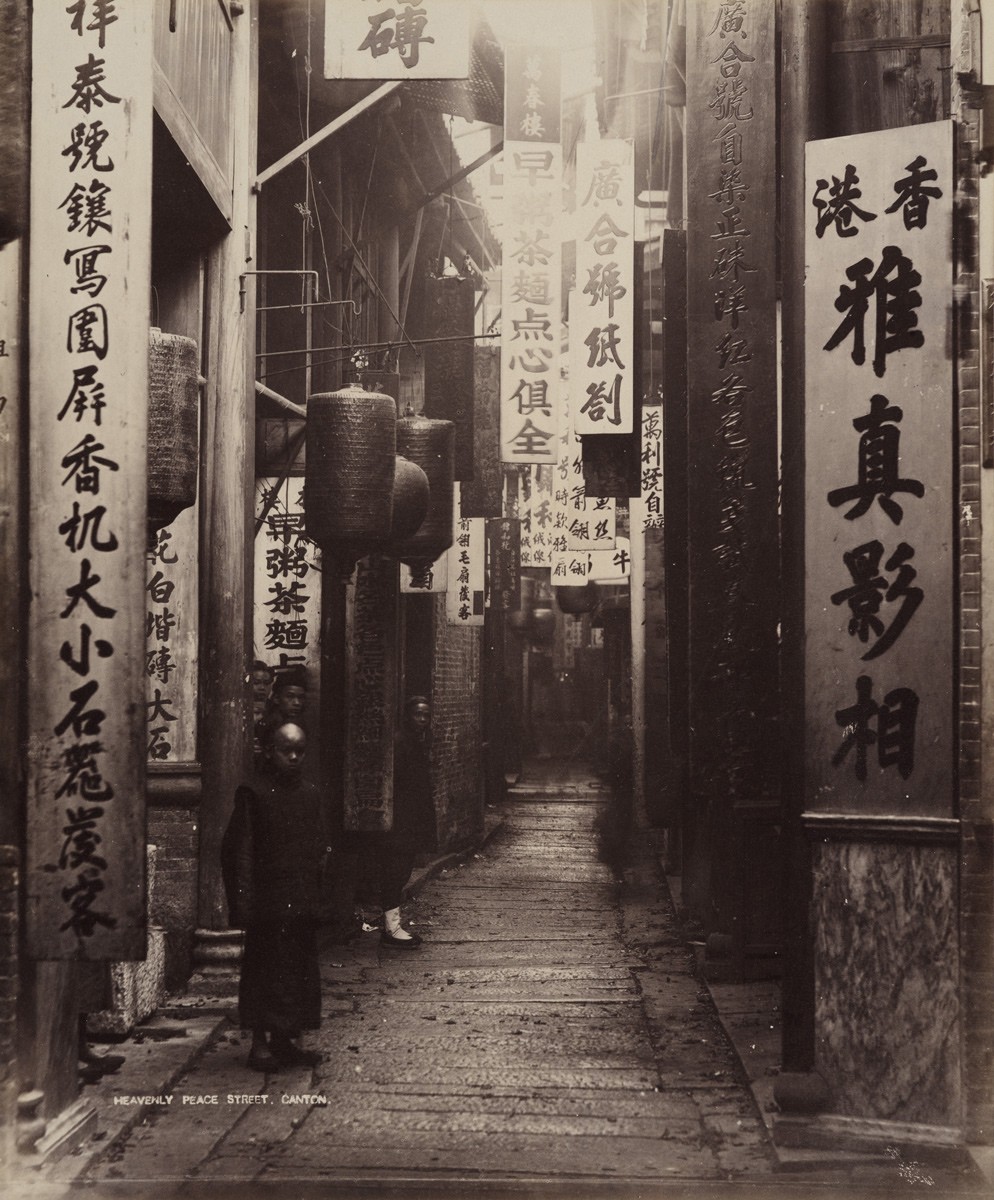
A Chan Studio (Ya Zhen), Heavenly Peace Street in Guangzhou 1870s Albumen print 29 cm x 22 cm
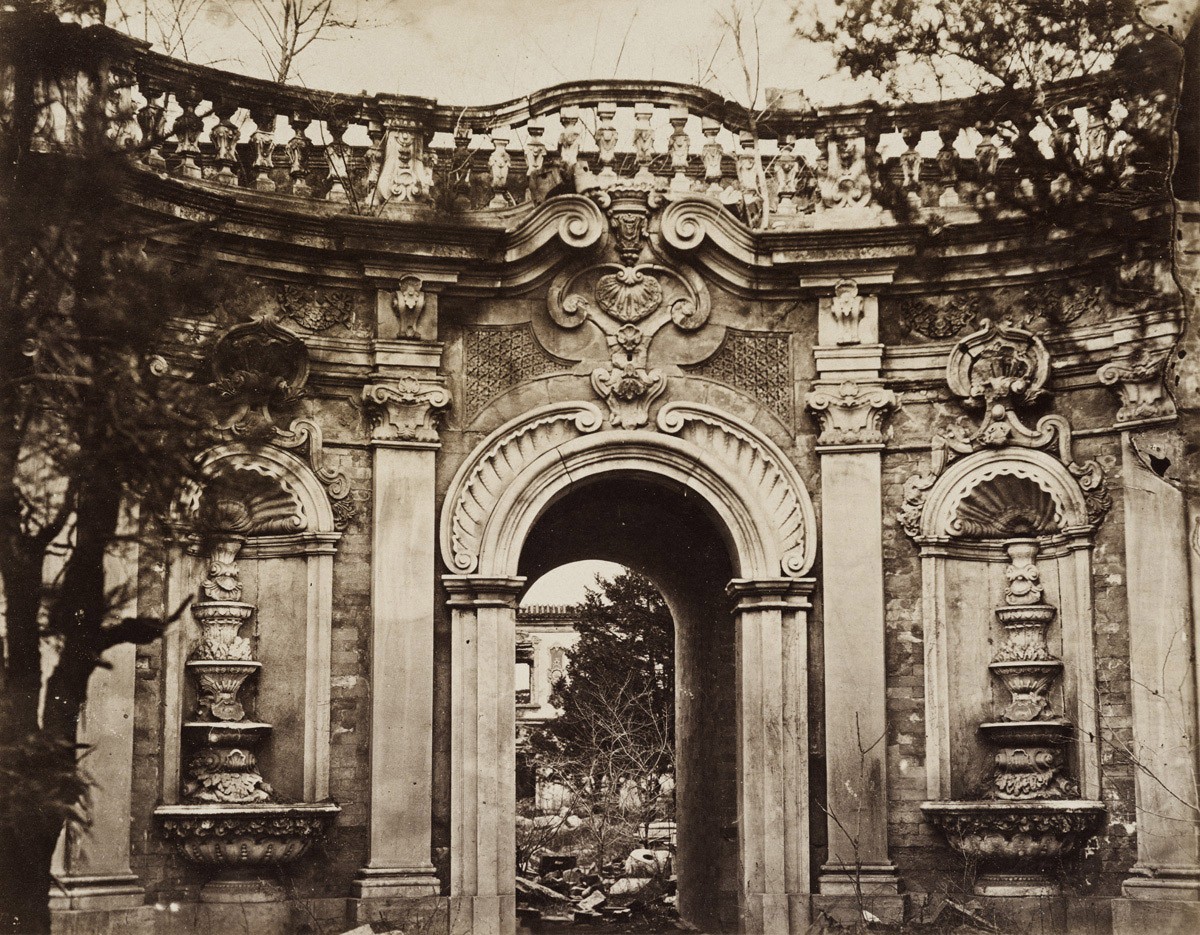
Thomas Child, Fountains Gate, Old Summer Palace (Yuanmingyuan), Beijing 1870s Albumen print 22 cm x 29 cm
Indeed, Loewentheil’s photographs are more than just some of the earliest recorded forms of paper photography in China – they are living historical documents. Thomas Child’s photograph of the Yuanming Yuan’s Fountain’s Gate, for instance, is one of the few that allow us to appreciate the beauty of what is known today as the ‘Old Summer Palace,’ now not much more than a collection of ruins located in the northwest of Beijing.
READ MORE: Portraits of China: A Collection of Stories From China's Past
For Loewentheil, this was true since the early days of China photography. “The West was essentially introduced to the vast Chinese landscape, its cultures, and its peoples through the visual medium of photography. Early visitors brought back photographic art which transported viewers through time and distance with an immediacy transcending the written word. It allowed the West to gain access to the people, places, and events of China and offered a precise view of otherwise inaccessible people and places.”
This was true for their Chinese contemporaries as well. “A photograph enabled Chinese people and people from all over the world to get a glimpse and understanding of China that transcended the written word. Chinese people residing within the vast country of China could see landmarks, architecture and people from regions of the country that they had not visited.”
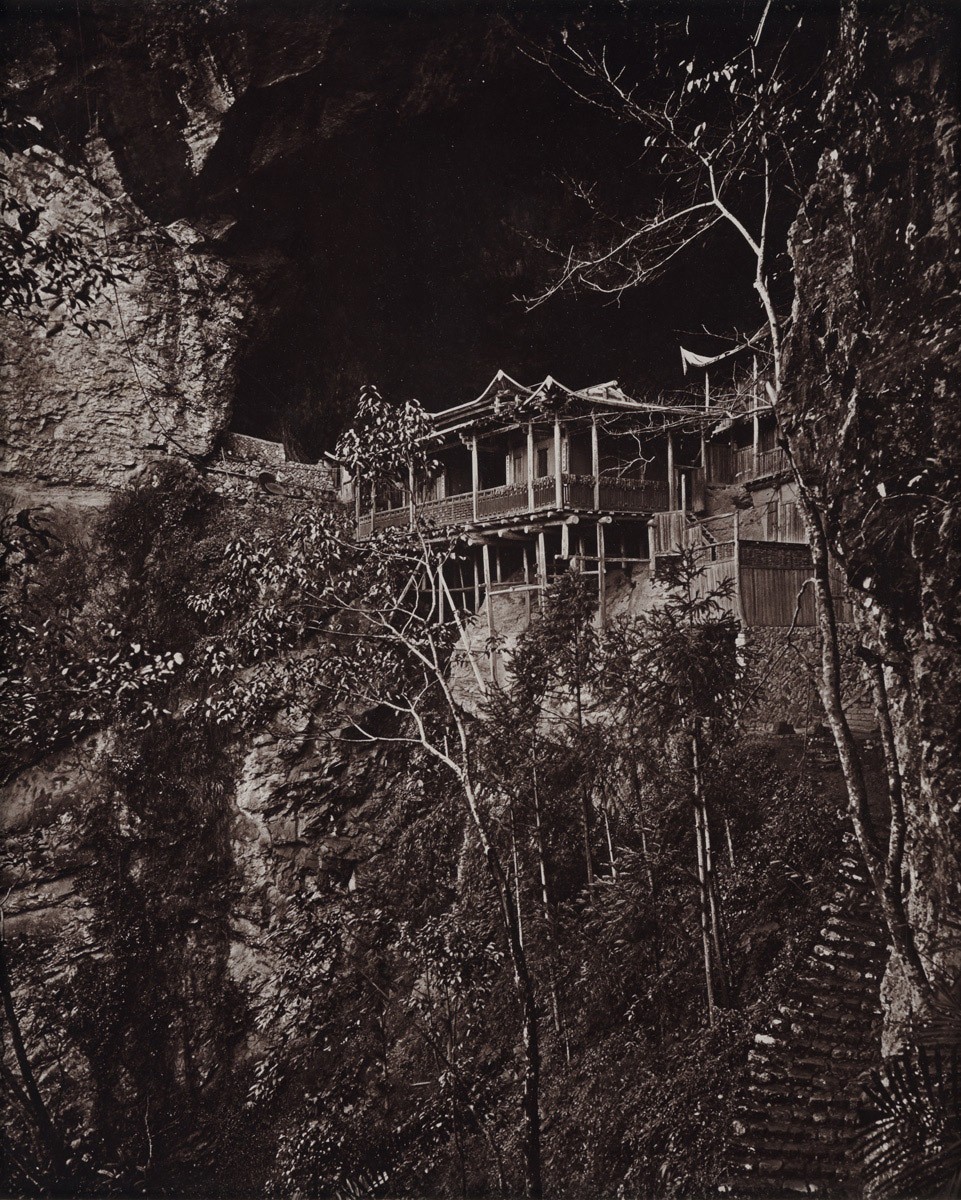
John Thomson, Yuanfu Monastery, Fujian c.1870 Carbon Print 29 cm x 22 cm
Despite their value, it seems that these early photographs of old China are still in the process of finding their place in the country’s artistic discourse.
“Unfortunately, there is yet no permanent public museum collections in China where people can view the great heritage of early Chinese photographic art,” says Loewentheil. This made the 2018 exhibition Vision and Reflection: Photographs of China in the 19th Century from the Loewentheil Collection, curated by Philip Prodger and hosted by the young Tsinghua University Art Museum from November through last month, even more groundbreaking.
"Photography preserved through art images of that vanished world and documented the transformation of the diverse lands of 19th Century China into the great modern nation it has become."
Marking the first time that part of the impressive Loewentheil collection was made available to Chinese audiences, the exhibition focused on presenting photography as “a documentary tool and a way for human beings to understand themselves,” as Su Dan, vice director of the Tsinghua University Art Museum, underlines in his introduction to the exhibition.
READ MORE: The Photographer Documenting China's 'Weird Architecture' Era
It was also an occasion to discuss the spread of photographic arts in China. Among the 120 pictures shown at Tsinghua University, all in a surprisingly good state of conservation, were some from pioneers of Chinese photography like Lai Afong from Hong Kong and Liang Shitai from Tianjin. These early photographers are credited not only with mastering a new technique, but also for popularizing it among a climate of discomfort towards this new technology. They had to first popularize the practice among the elite in order to then proceed to introduce it among merchants and common people. This is why Loewentheil’s collection also includes portraits of great historical value, including some of Empress Dowager Cixi and of late-Qing high-ranking official Li Hongzhang.
“The amount of creativity, thought, and skill that went into making successful photographs in the 19th century was at least as great as in painting,” Prodger says. “It was not like today. Photographs were extremely difficult to make. When we look at them now, we can marvel at the way they used the new medium to explore the visual world in innovative ways. There was literally no precedent for much of what they accomplished.”
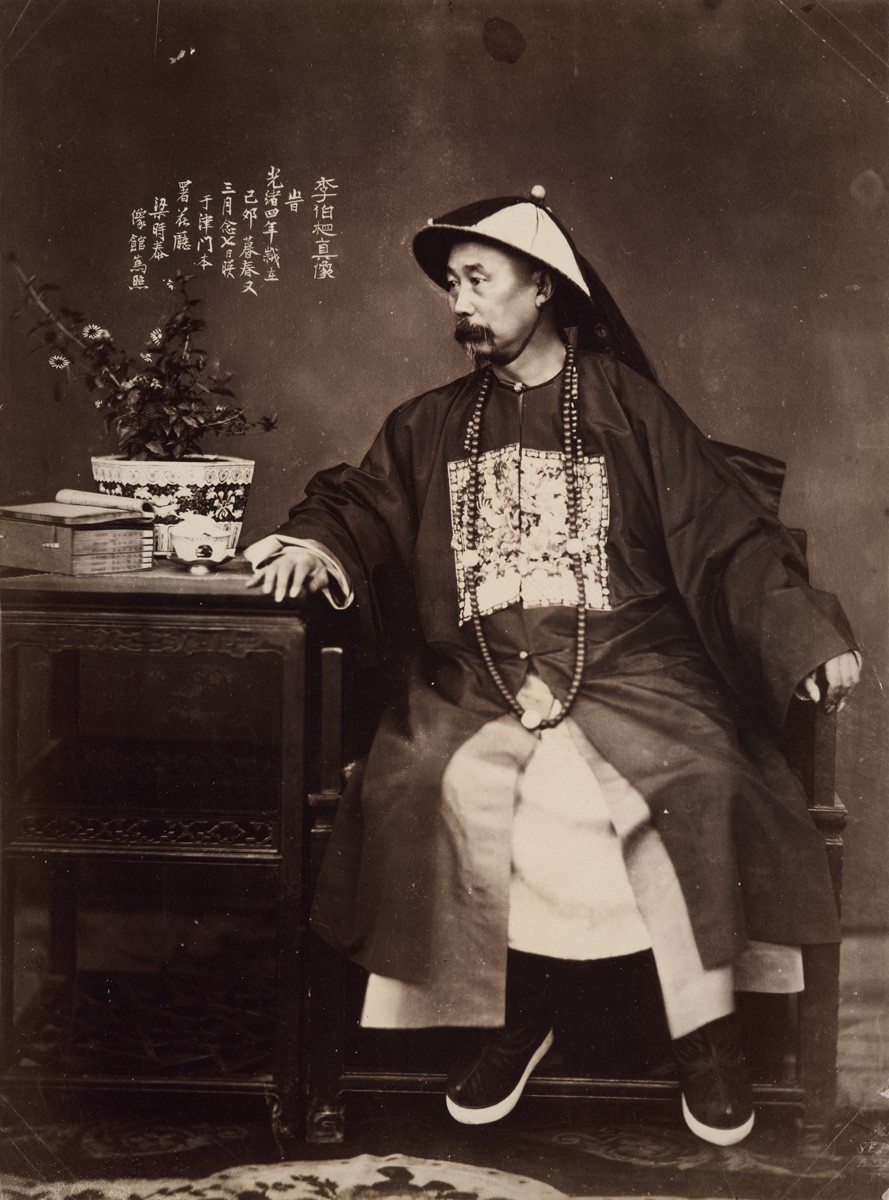
Liang Shitai, Li Hongzhang c.1870 Albumen print 29 cm x 22 cm
Since the late 19th century, their works represented an important form of cultural exchange between China and the rest of the world, allowing for the appreciation of the artistic significance of Chinese photography.
“The amount of creativity, thought, and skill that went into making successful photographs in the 19th century was at least as great as in painting”
“There is an old idea that photographic history was driven by the West and percolated through to places like China in the 19th century, and that China basically received this technology, and the way of looking it represented, from the West,” Prodger remarks. “This show causes us to rethink that completely. While it is true that most of the technical inventions in photography did come from Europe and the United States at this time, these were only tools.” After all, as Loewentheil tells us, “China has its own tradition in optics that predates the introduction of photographic technology from the West. […] From writings in the 11th century by Shen Kua, and the 13th century by Kuo Shou-Ching, it is clear that the scientific thought fundamental to the camera obscura, an important precursor to the camera, was known to the Chinese hundreds of years before the device appeared in the West.”
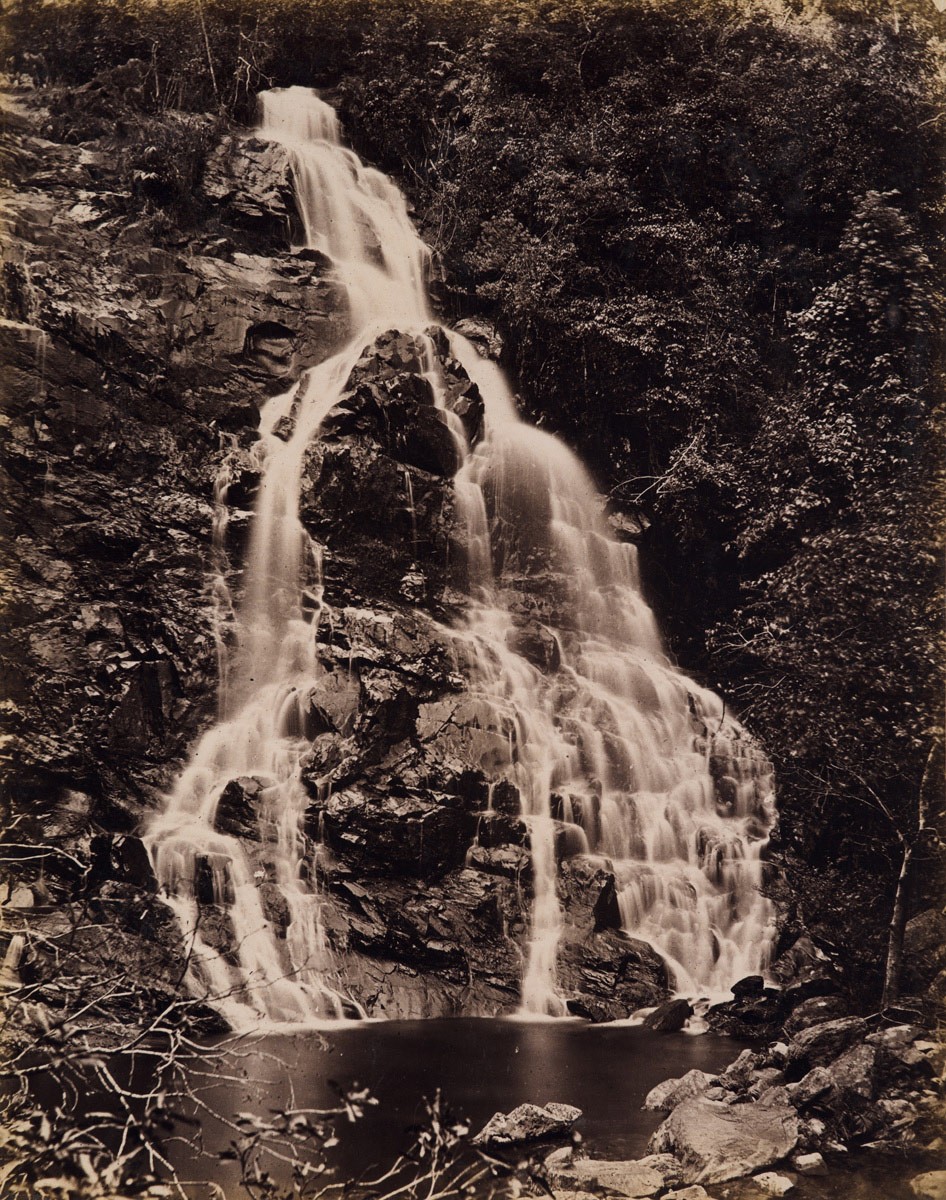
Lai Afong Macau Waterfall c.1860 Albumen print 29 cm x 21 cm
Also, pictures from Chinese and non-Chinese photographers show differing aesthetic stances. For example, Chinese photographers created portraits with compositions similar to those of paintings, while western photographers attempted to seize the movements of sitters. With regard to architectural photography, Chinese photographic studios were inclined to include architecture into landscapes while western photographers focused more on the architecture itself.
By forever impressing scenes of China’s past, these photographs not only act as historical documentation, but also serve as testament to the radical changes the country has undergone throughout the last century. Putting together Chinese and non-Chinese views of China, they also establish a dialogue between two artistic traditions and cultures. For the collector himself, this is “an important first step to help lead China into the international movement celebrating the art of early photography, while learning about the great historical foundation upon which China has been built.”
READ MORE: 10 Stunning iPhone Images Taken by Chinese Photographers
In His Own Words
Commentary on Masterpieces by Art Curator Phillip Prodger
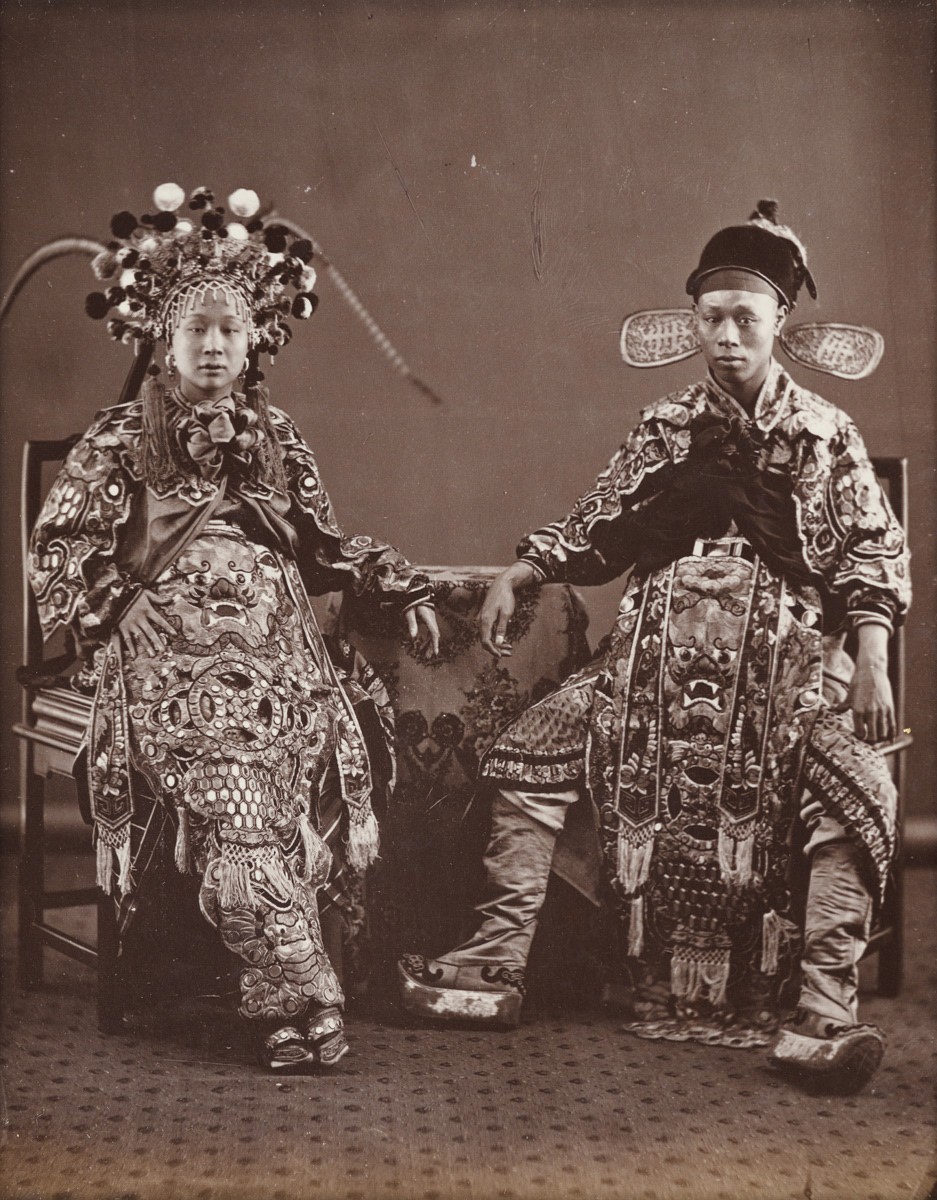
Lai Afong, Actors c.1870 29 cm x 22 cm
“Working from studios in Hong Kong, Lai Afong made some of the most beautiful and evocative photographs of Southern China, especially the Pearl River Delta, in the 19th century. I don’t think he ever made a bad picture. This one is very special because the two sitters face the camera even as they relate to one another. There is something magical about the woman’s left hand and the man’s right hand placed on the table, mere centimeters apart. Lai Afong probably positioned them there for stability so they would not blur in the picture, but there is something about that gesture of reaching and not touching that makes the picture endlessly endearing.”
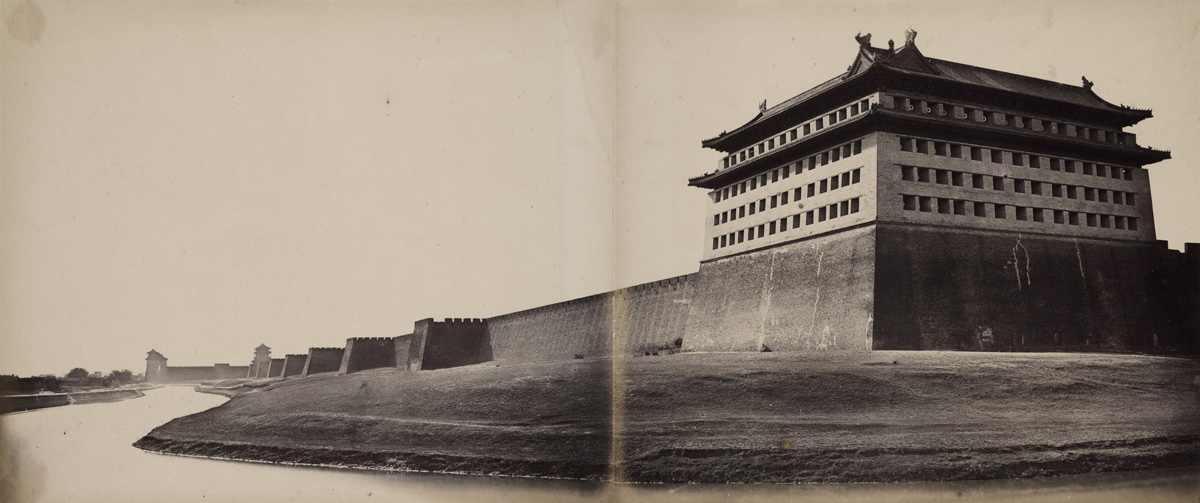
Felice Beato North Gate, Beijing 1860 Albumen print, 2 print 23 cm x 59 cm
“This is a great example of how China has changed almost beyond recognition since the 19th century. Sections of this wall still exist, of course, and will be wellknown to Beijing residents, although much of it has been dismantled. But the feeling of vast empty sky and the barren, rocky landscape make the city look like a desert fortress more than the bustling international capital it is today.”
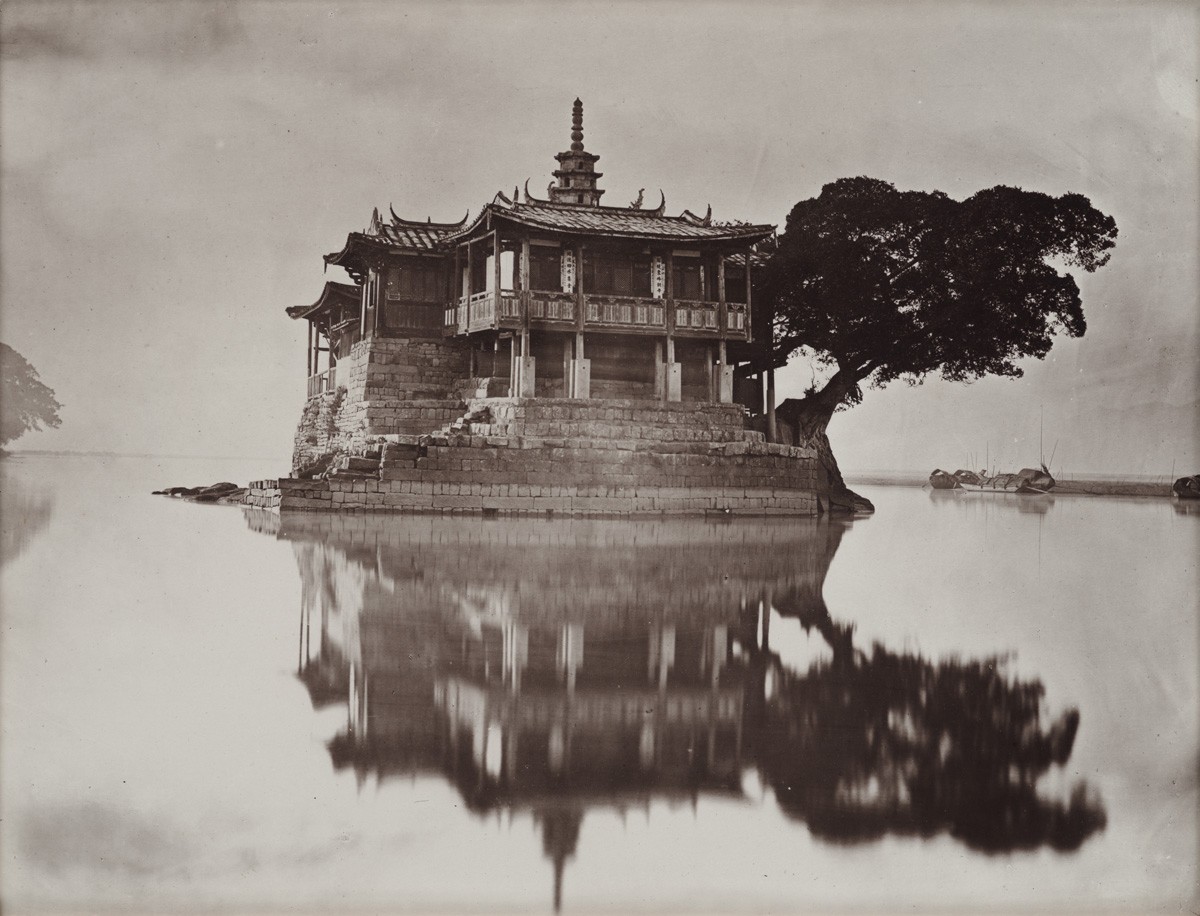
John Thomson Island Pagoda, Min River, Fujian c.1870 Carbon Print 22 cm x 29 cm
Scottish photographer John Thomson was one of the first to travel to the Far East and use the new medium to document the people, landscapes and artefacts he got in touch with. His collection Foochow and the River Min (1873), realized during his five-year stay in China, contains landscapes from the city of Fuzhou, in Fujian province, and is universally celebrated as one of the greatest works of early photography.
"This is one of the most famous photographs ever made in 19th-century China. The temple, which still exists, is shown in mirror reflection on the calm minimal surface of the river, against a bright sky. It almost doesn’t look photographic; rather, the sky and river look more like the raw silk or paper of a traditional brush painting. The overall effect is of the temple suspended in space, levitating, an object of contemplation and meditation."
For more photo essays, click here.
[Images courtesy of the Tsinghua University Art Museum and the Loewentheil China Photography Collection]
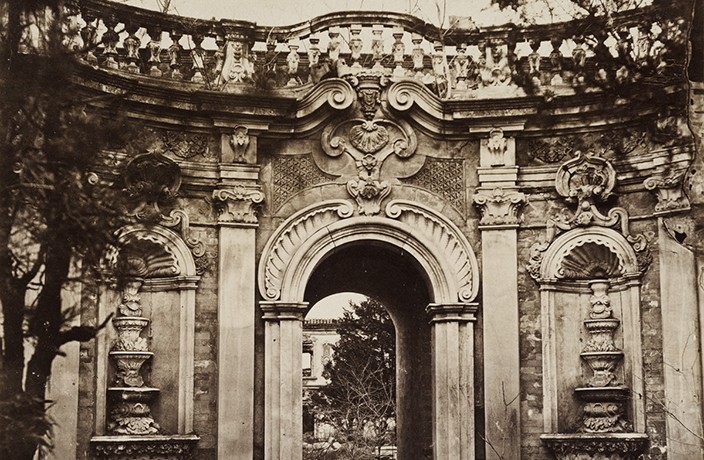




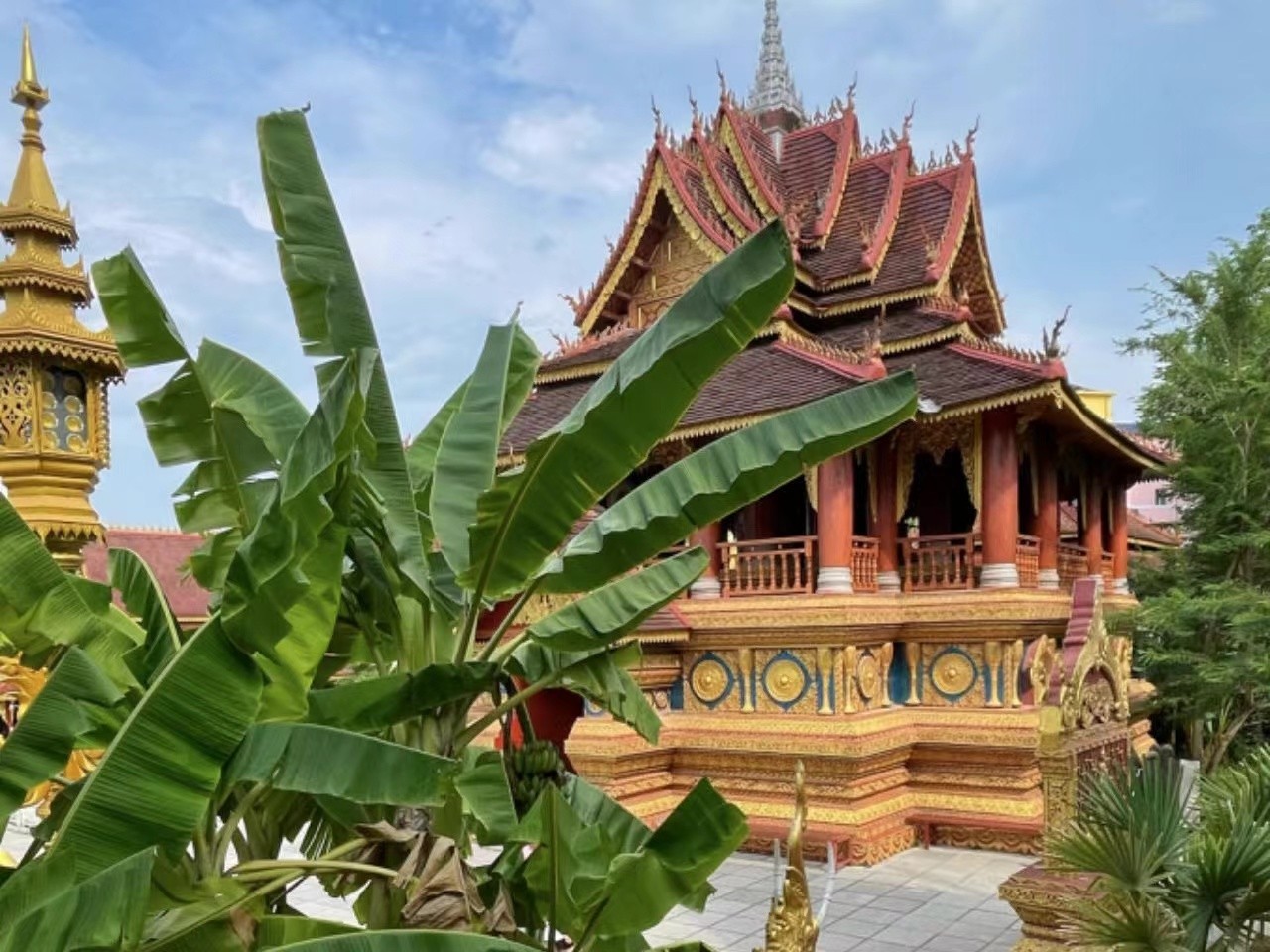
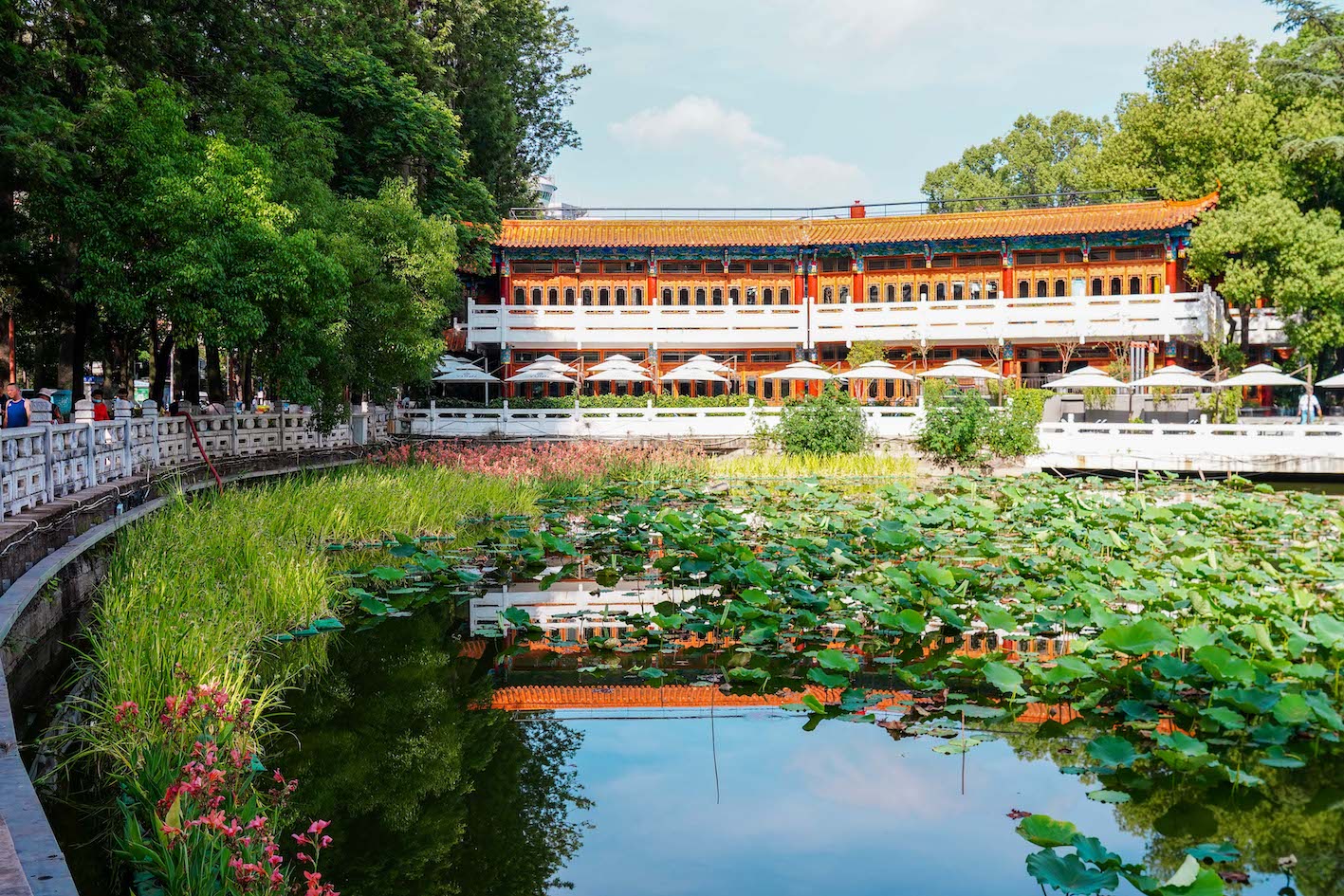
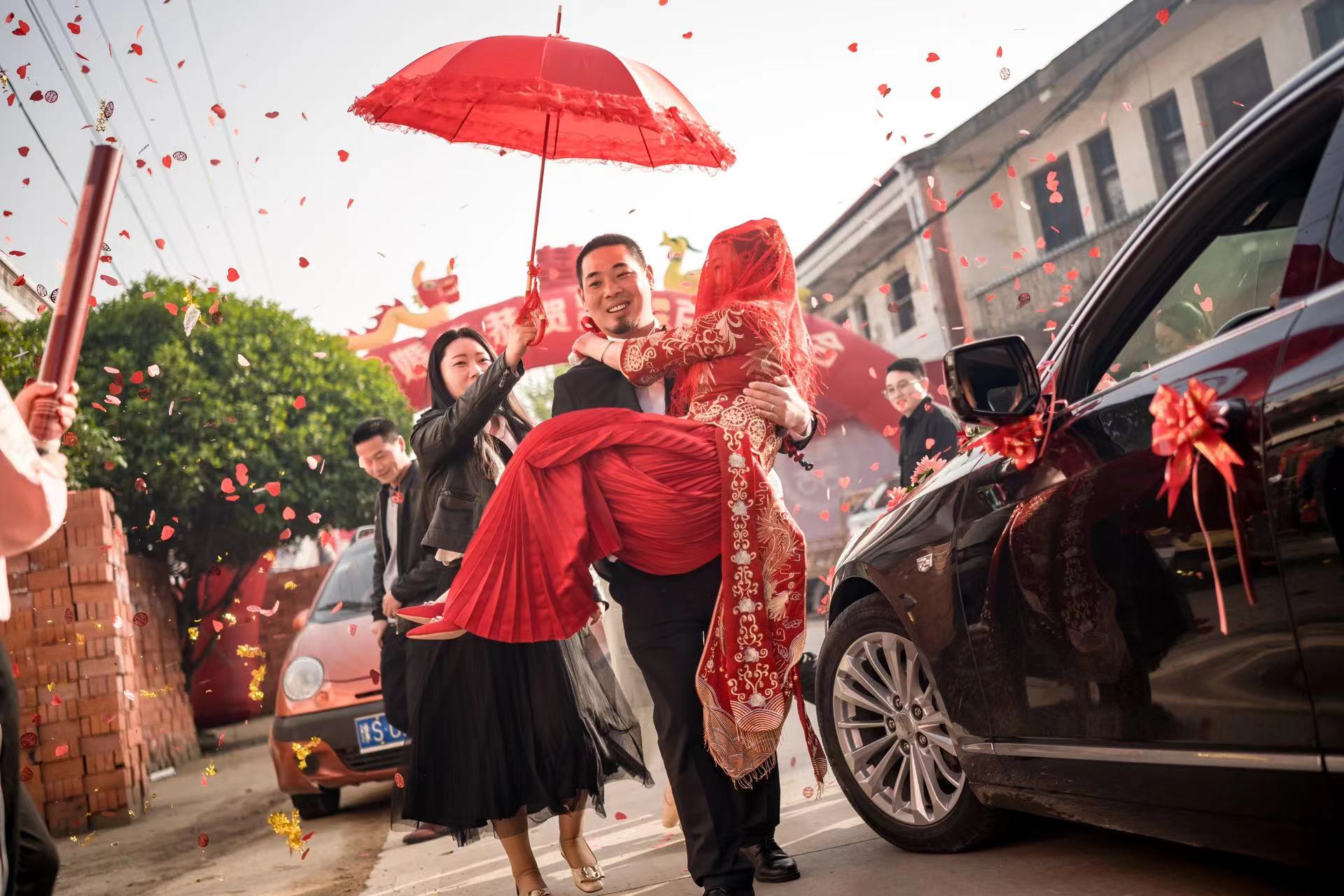












0 User Comments